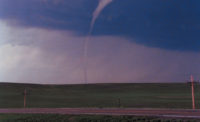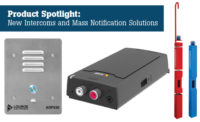3 Key Capabilities for Corporate Campus Mass Notification and Alert Systems

Emergency mass notification services (EMNS) don’t tend to garner a lot of attention – except when man-made events or natural disasters, such as severe weather, earthquakes, floods, cybersecurity breaches, terrorist or active shooter incidents occur and cause interruptions in critical business activities. Gartner estimates that the unplanned downtime caused by these types of events can cost organizations as much as $5,600 per minute, which makes access to information and the guidance needed to restore operations and protect employees incredibly valuable.
For businesses with corporate campuses of any size or location, communicating effectively with employees, vendors and visitors during any of these events can be very complex. Depending on the size of the campus or the total number of locations impacted, there may be the need to notify and inform hundreds, thousands, or even hundreds of thousands of individuals. At other times the event may be much more geographically concentrated to a single campus or building, limiting the scope of the notification to a much smaller group of employees or individuals.
In addition to the complexity created by the size of the audience, emergency management personnel must be able to address the form factor preferences of each audience member. Gone are the days of sending a single email, as audience members have individual preferences ranging from text to email and phone calls to pre-recorded voicemail messages. Organizations can’t dictate how individuals should choose to communicate or respond, but rather must assess the mediums used by employees across corporate campuses, and enable these individuals to set their preferred communications medium, whether it’s email, text message, voice or even social media. Planning for these events also allows differentiation of messages for different people, i.e. the communications team can be brought together for one purpose and the security team for another.
For executives already leveraging mass notification systems for IT alerting or just evaluating available solutions, three key capabilities are worth considering:
Reliable Two-Way Communication
Ensuring employee safety and continuity of operations is difficult to achieve by simply pushing out alerts. Business and security decision-makers need a way to ensure the delivery of real-time, mission critical notifications in any message format needed, as well as a method for individuals to “respond” back to an alert in order to deepen event context when possible.
Two-way notification is a necessary capability for IT and security administrators seeking to gather receipt confirmations and feedback on how individuals are responding to those alerts. With this information in hand, decision-makers can better determine when to share more information, adjust the recipient group, initiate a quick conference call with key stakeholders or continue to gather information.
Automated Notification
Ultimately, businesses want to ensure the safety and security of any individual at one of their facilities, while shortening the time between the occurrence of emergency events or incidents impacting business continuity such as a network outage, and the resolution of that incident. This requires removing as many manual steps as possible by automating alerts based on predefined rules and event triggers.
IT incident management alerts and escalations is a prime example of where automation proves valuable. While manual notification solutions can assist in the process, IT personnel typically don’t have the time to identify an incident, then manually launch and monitor responses from a notification solution. When events happen, automated alerts are sent to the appropriate groupings of individuals, taking into account whether they are on duty, on call or out of office, letting recipients quickly fix problems before they cause downtime or delays and ultimately delivering a recognizable return on investment by reducing response time for IT incidents.
Ultimately, this type of notification enablement follows the same principles of planning for messages about general business interruptions or crisis communication. A process for messaging must be defined that identifies who should get the notification, what the message should say, when should it be delivered and, importantly, when escalation might be required.
The IT incident might require the definition of unique groups and different messages. Obviously the IT resources that have responsibility for resolution must be notified, but information must also be provided for IT management and stakeholders (employees, customers, suppliers, etc.) who have a need to know about the incident. And each incident and the criticality or severity of that incident might require a different definition of these groups for notification and the timing for those notifications.
Geo-Targeting
Businesses with highly distributed corporate campuses are going to find situations when alerts need to be directed to a specific area ranging from a building, to the entire campus, or even multiple campuses worldwide, to ensure only those recipients are notified.
Geo-targeting is often considered for emergency response or law enforcement organizations seeking to alert citizens in defined geographic areas about various threats and incidents, but it is a capability that can be leveraged by enterprises as well – particularly those with employees spread across a large geographic area or multiple locations.
Through combining speed and relevancy, organizations can help increase employee adoption rates and use of notification systems and ultimately ensure that alerts effectively reach, inform and positively impact your organization.
Looking for a reprint of this article?
From high-res PDFs to custom plaques, order your copy today!







